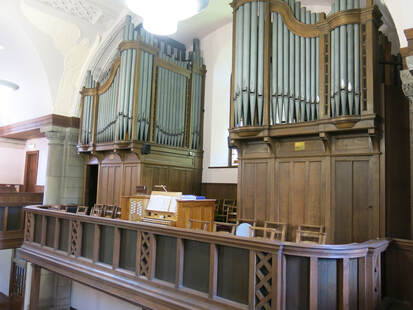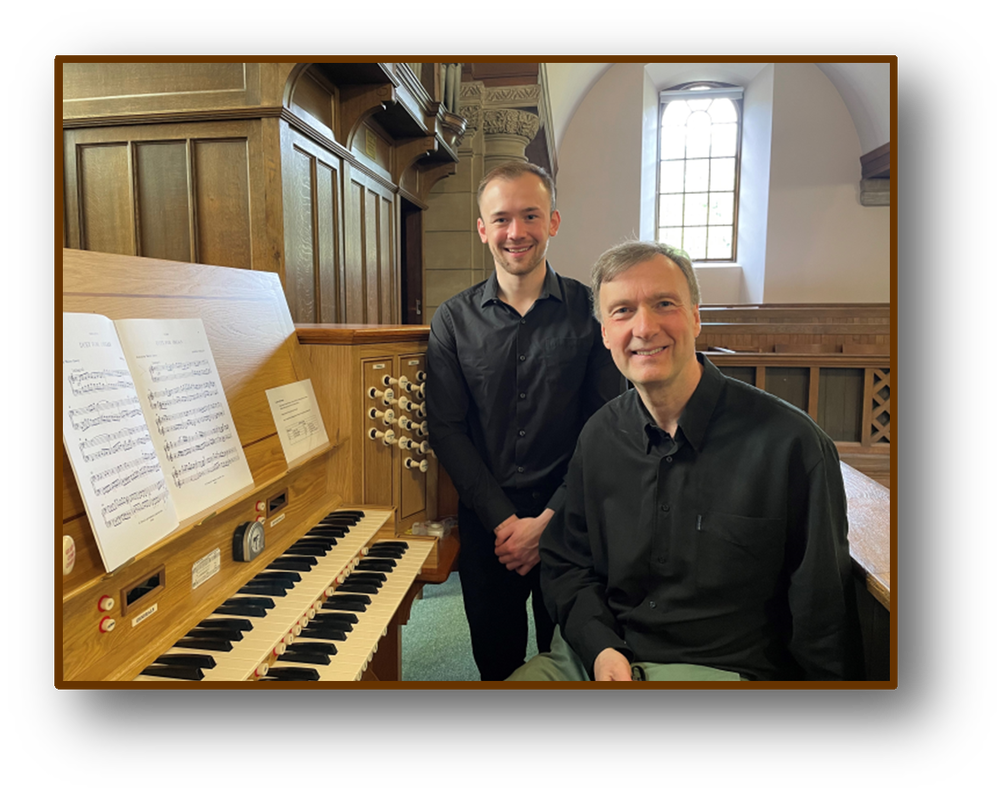|
THE PIPE ORGAN IN COLINTON PARISH CHURCH
Music has played an important part in the worship of Colinton Parish Church for a long time. Until the early 1990s singing was mainly accompanied by the organ. There are many references to the Precentor in the old Parish records, but hymns were not sung in the Church until 5th June 1881. An organist was appointed in 1897, when a harmonium, donated by a Mrs Aikman was installed, but the Precentor was still in evidence in 1898 and only in 1903 was an organist employed to take the Choir in hand as well. The present church building was opened in 1908 and on 20th May that year, a contract was signed with Norman & Beard Ltd., of London and Norwich, for an organ with two manuals and pedals to be installed by 31st October 1908, at a cost of £700. Half of this cost was donated by Mr Andrew Carnegie, once the first half had been collected!The action was tubular-pneumatic and the blowing was done by a hydraulic engine, which was subsequently replaced by an electric engine in April 1917, but because of war regulations it could not be switched on until 18th August 1918. In the interim the organ had been hand-blown. The organ was installed originally on the South side of the chancel with a detached console in what is now the Chapel. Part of the instrument was situated six feet below the churchyard level and by 1927 the organ was badly affected by dampness and dry rot. In order to prevent the fabric of the church from being affected also, the Kirk Session decided to move the organ and Choir to the West gallery. This work was begun in January 1928 by Rushworth & Dreaper Ltd. of Liverpool, and the organ was first used in its new position on 20th May 1928. The instrument was divided into two sections on either side of a stained glass window, and the opportunity was taken to modify slightly the original specification. The Pedal Bourdon was extended to the Great at 16ft pitch and a Twelfth 2⅔ft was also added. The Clarinet was discarded and replaced by a Tromba 8ft. The Swell Echo Gamba and Voix Celeste were replaced by an Aeoline 8ft and Vox Angelica 8ft respectively (apparently using the existing pipework). The tubular -pneumatic action was retained and a new mahogany case was presented by Mrs Gibson of Redford in memory of her husband, who had taken an active part in having the first organ put intothe church. The total cost of the rebuild amounted to £895.11.0d. Since that time no further alterations were made to the organ although it was cleaned in the summer of 1962. However, musical requirements and outlooks had changed considerably since 1908 when the original contract with Norman & Beard Ltd stipulated that "the open diapason be made as large as possible." Early in 1976 the Kirk Session agreed to have the organ completely rebuilt and modernised by electrifying the action and redesigning the tonal structure of the instrument, as far as available money and space permitted. This work was entrusted to a highly experienced local organ builder, Mr Ronald L. Smith, who completed the rebuilding in October 1976. The organ was kept as a two manual instrument, but new manuals and a new 32 note pedal keyboard were installed. The latest solid state system was used to give instantaneous control of stops and combination pistons. The number of speaking stops was increased from 20 to 34, so that there is now a total of 1547 pipes some of wood but mostly of metal, combining to produce an organ with a wide range of tone colours and great flexibility, and capable of enhancing the music of the Parish Church for many years to come. Having given reliable service for more than100 years, the organ was fully refurbished in 2015. We are grateful to all who have contributed towards raising the necessary funds to undertake this comprehensive work. Our special thanks go to The Army who has been co-funding this project through its Community Covenant Grant Scheme. |
|
Edinburgh Pentlands Parish Church of Scotland
Colinton, Dell Road, Edinburgh EH13 0JR, t: 0131 441 2232, e: [email protected] Registered Charity No SC010313 |


